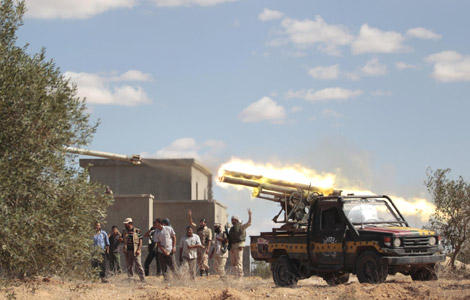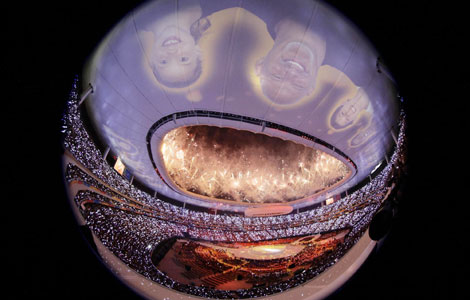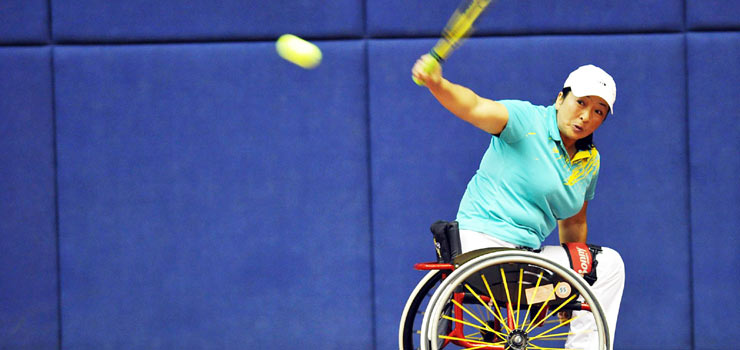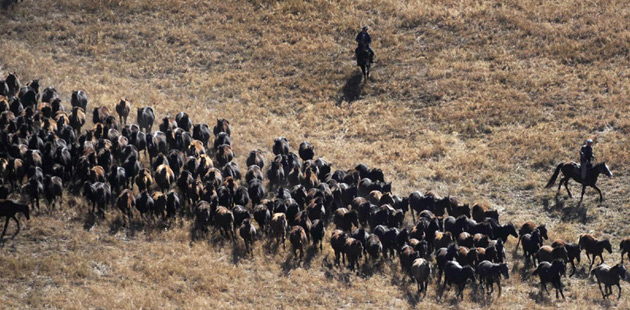Japan's air force plans major overhaul
Updated: 2011-10-16 18:21
(Agencies)
|
|||||||||||
HYAKURI AIR BASE, Japan — Warplanes bearing the bright red Rising Sun logo roared overhead Sunday as Japan held a once-every-three-years display to showcase one of the best air forces in Asia.?
Underscoring Japan's uphill battle in an increasingly heated race to control the skies over Asia, the air review came just a week after the country's entire F-15 fleet was ordered into its hangers for safety checks following a midair accident, the second such order in three months.
But Japan's Air Self-Defense Forces are about to get a multibillion dollar overhaul.
For Sunday's review, the F-15s — the workhorse of Japan's air defenses — were relegated to ground displays, either parked on the runway or allowed to taxi but not take off. Last weekend, an empty fuel tank burst and detached from a F-15 on a training flight, causing the grounding order. In July, an F-15 flying out of Okinawa crashed into the ocean. The pilot is listed as missing and presumed dead.
The accidents reinforced what military planners already knew: Japan's aging air force has seen better days. But after years of delays and budget battles, Japan is expected to announce by the end of December a new fighter deal that will likely shape Asian air security for decades to come.
"The JASDF is on the edge of becoming a major tool of power projection," said Michael Auslin, a Japan security expert with the American Enterprise Institute, a Washington, DC-based think tank. "With its fighter selection process, it will signal whether it intends to be qualitatively competitive with leading air forces around the region over the next generation."
Japan — with 362 fighter jets, mostly F-15s, F-4s and F-2s — is already one of the top air powers in the region.
Japan has been using the F-15 as its centerpiece fighter since the early 1980s, though they have been updated over the years. Japan flies about 200 of the planes.
Tokyo's first choice was the United States' stealthy F-22 Raptor, which can cruise at supersonic speeds and is hailed by many aviation experts as the most advanced fighter in the skies. Japan is the only country where the F-22 is regularly deployed overseas, having done several rotations to the US Kadena Air Base on the southern island of Okinawa.
Acquiring the F-22 would have been a quantum leap for Japan.
Because of its sensitive technology, the US Congress has opposed selling the F-22 abroad. Budget restraints in the United States have further forced Washington to drastically reduce its own orders for the pricey plane, whose future is now cloudy.
With the F-22 out of the picture, Japan has set its sights on three jets as its next mainstay fighter — the Lockheed F-35, Boeing's F/A-18 Super Hornet and the Eurofighter Typhoon. The hotly contested deal for more than 40 "F-X," or next generation, planes is worth upwards of $8 billion. The first planes are expected to begin arriving in 2016.
Japan is likely to go with one of the American options.
Washington is Tokyo's main ally. Roughly 50,000 US troops are stationed in Japan under a security pact. Japan's air forces must work closely with their American counterparts, and using the same or similar equipment makes that easier.
Related Stories
China buys Japan debt as crises in West grow 2011-10-12 07:51
S Korea's new nuclear envoy to visit Japan 2011-10-11 17:36
Japan muddies water in South China Sea 2011-10-10 11:57
Hot Topics
Libya conflict, Gaddafi, Oil spill, Palace Museum scandal, Inflation, Japan's new PM, Trapped miners, Mooncake tax, Weekly photos, Hurricane Irene
Editor's Picks

|

|

|

|

|

|







